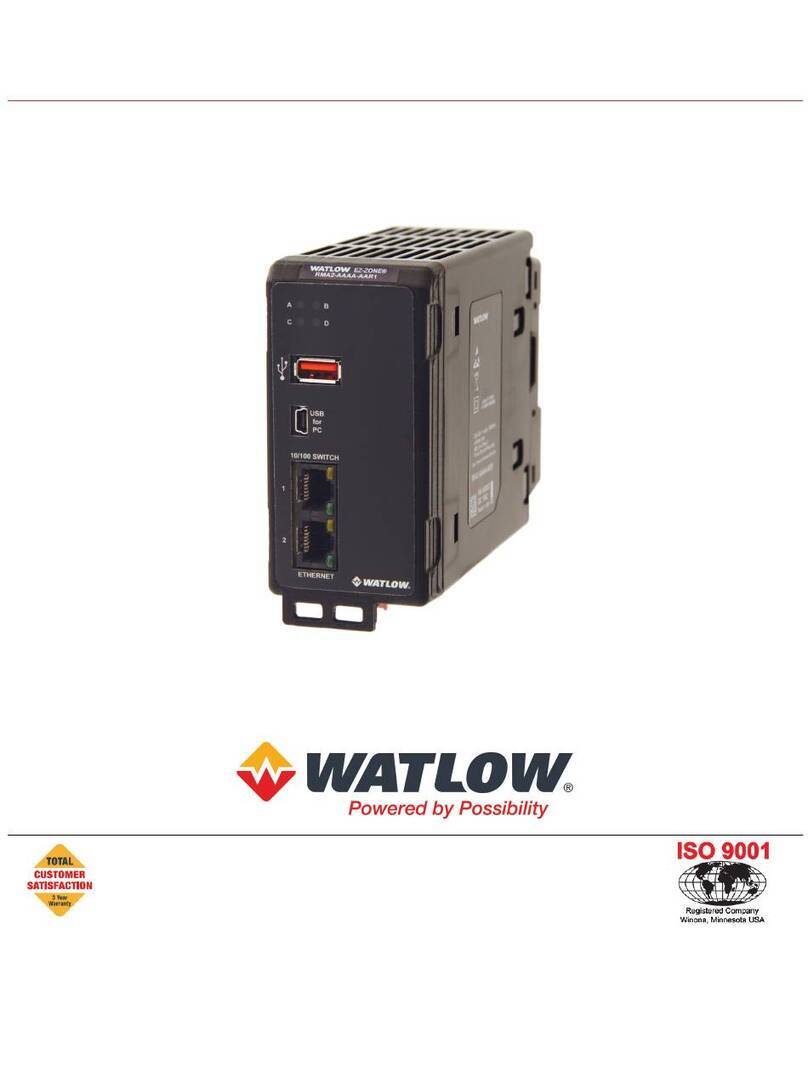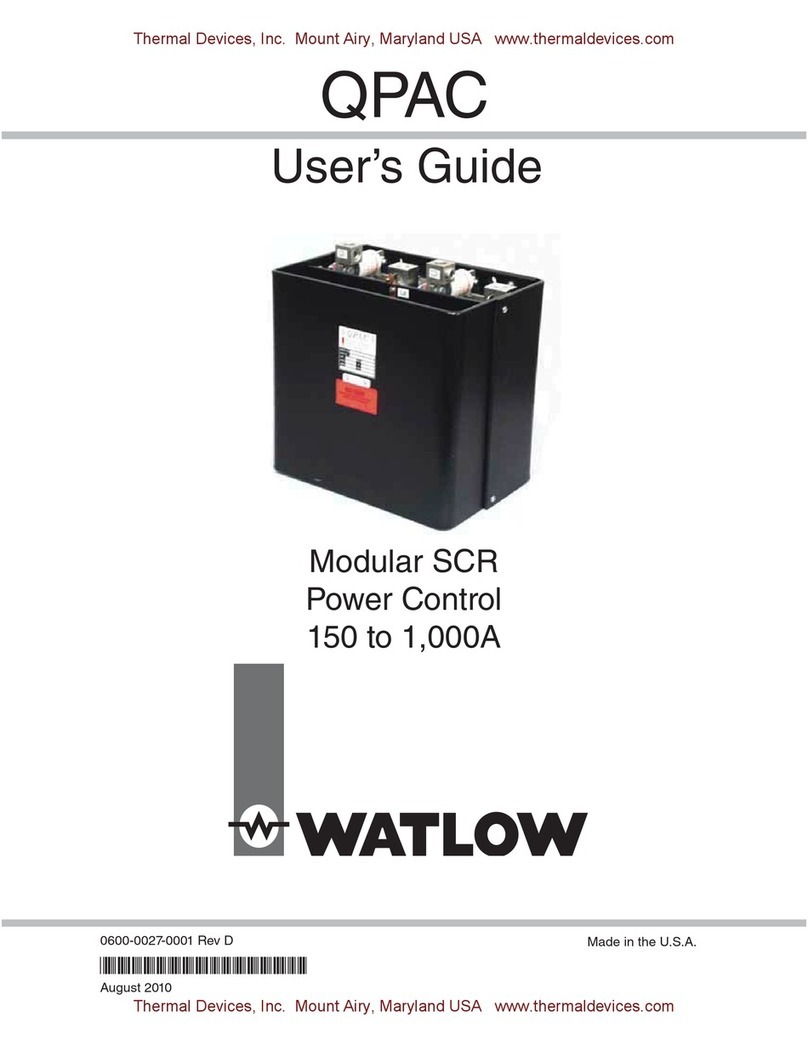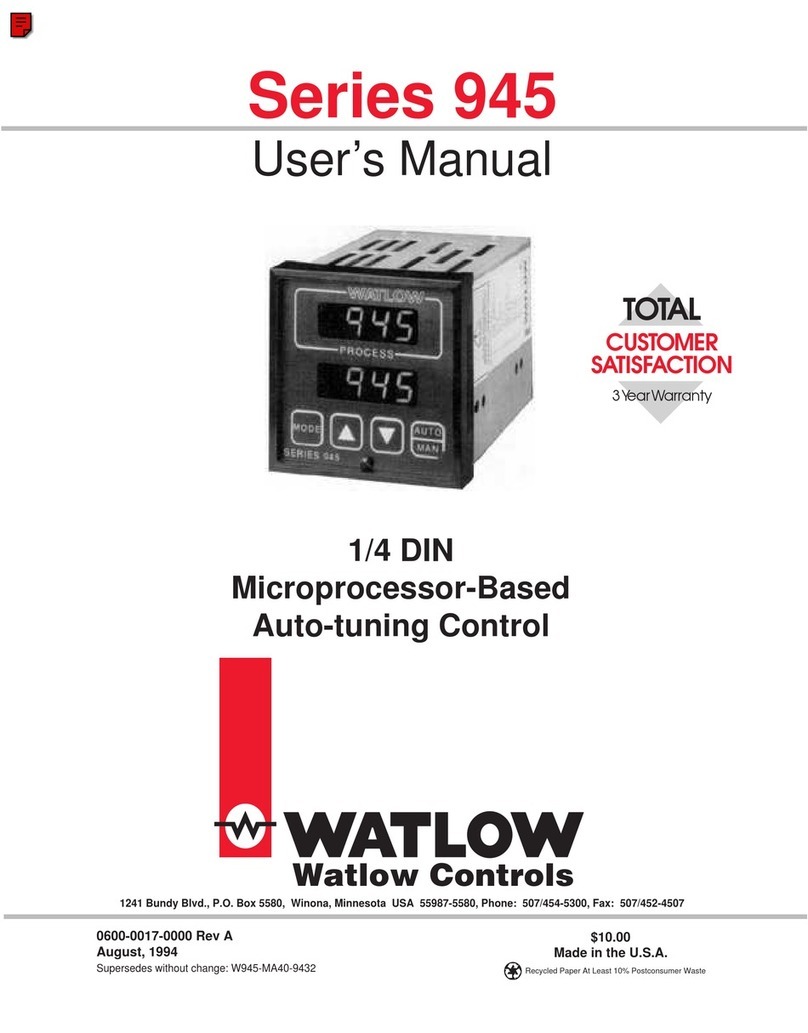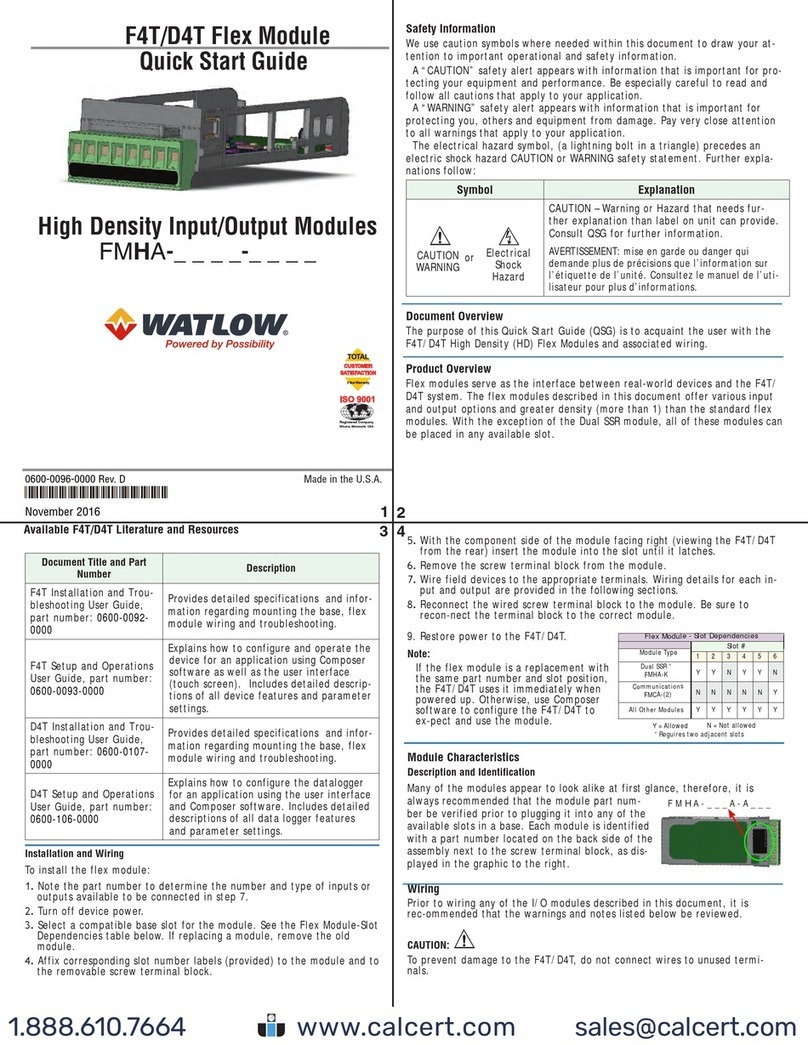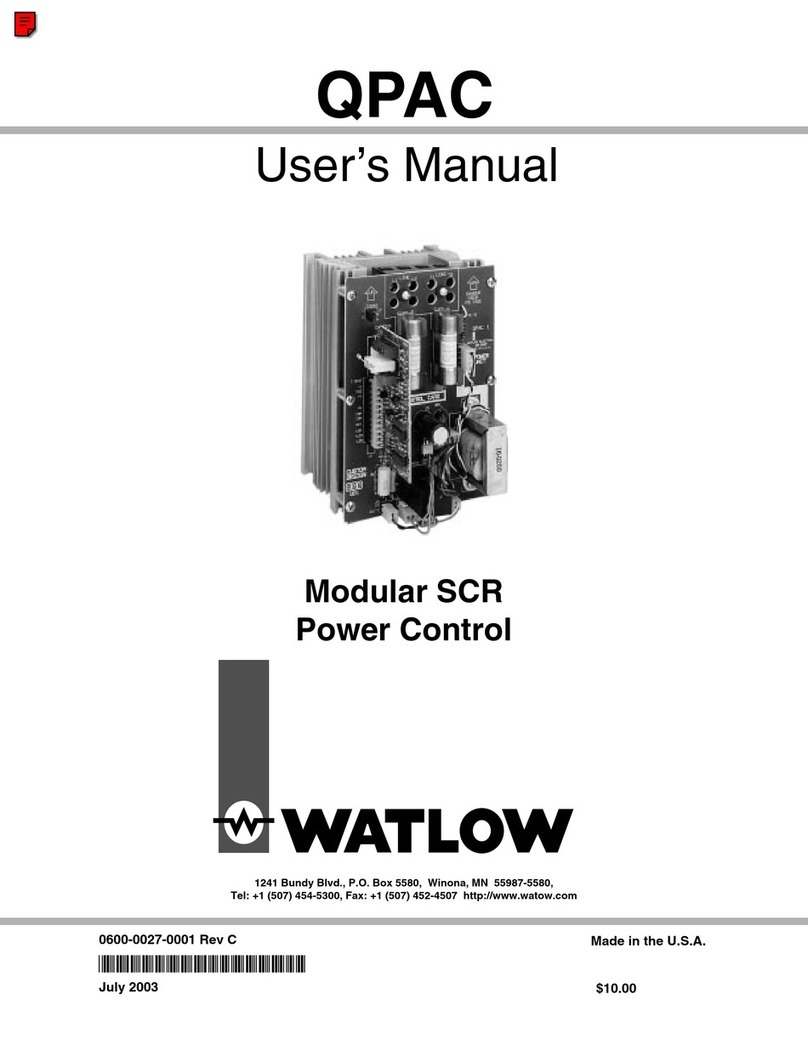
Watlow F4T Install & Troubleshooting •3 •Chapter 1 Overview
Warranty
The F4T controller is manufactured by ISO 9001-registered processes and is backed by a
three-year warranty to the rst purchaser for use, providing that the units have not been
misapplied. Since Watlow has no control over their use, and sometimes misuse, we cannot
guarantee against failure. Watlow's obligations hereunder, at Watlow's option, are limited to
replacement, repair or refund of purchase price, and parts which upon examination prove to
be defective within the warranty period specied. This warranty does not apply to damage
resulting from transportation, alteration, misuse or abuse. The purchaser must use Watlow
parts to maintain all listed ratings.
Return Material Authorization (RMA)
1. Prior approval and an RMA number from the Customer Service Department is required
when returning any product for credit, repair or evaluation. Using a computer, open up
your preferred browser and navigate to http://www.watlow.com/rma. Fill out the form
as completely as possible. Submit the form when complete.
2. After the form has been reviewed a Watlow Customer Service Representative will con-
tact you to deliver an RMA number and a shipping label. Once received, ensure that the
RMA number is on the outside of the carton and on all paperwork returned. Ship on a
Freight Prepaid basis.
3. After we receive your return, we will examine it and try to verify the reason for return-
ing it.
4. In cases of manufacturing defect, we will enter a repair order, replacement order or
issue credit for material returned. In cases of customer misuse, we will provide repair
costs and request a purchase order to proceed with the repair work.
5. To return products that are not defective, goods must be in new condition, in the origi-
nal boxes and they must be returned within 120 days of receipt. A 20 percent restocking
charge is applied for all returned stock controls and accessories.
6. If the unit cannot be repaired, you will receive a letter of explanation. and be given the
option to have the unit returned to you at your expense or to have us scrap the unit.
7. Watlow reserves the right to charge for no trouble found (NTF) returns.
This F4T User’s Guide is copyrighted by Watlow Electric Manufacturing Company, © Septem-
ber 2014 with all rights reserved.
• © 2010-2012, QNX Software Systems Limited. All rights reserved.
• © 2008 -2014, Crank Software Inc. All rights reserved.
• Watlow® and TRU-TUNE® are registered trademarks of Watlow Electric Manufacturing
Company.
• UL®is a registered trademark of Underwriter's Laboratories Incorporated.
• Modbus®is a registered trademark of Schneider Automation Incorporated.
• Vaisala®is a registered trademark of Vaisala OY Corporation.
• Microsoft®and Windows®are registered trademarks of the Microsoft Corporation.
Quencharc®is a registered trademark of ITW Paktron.












